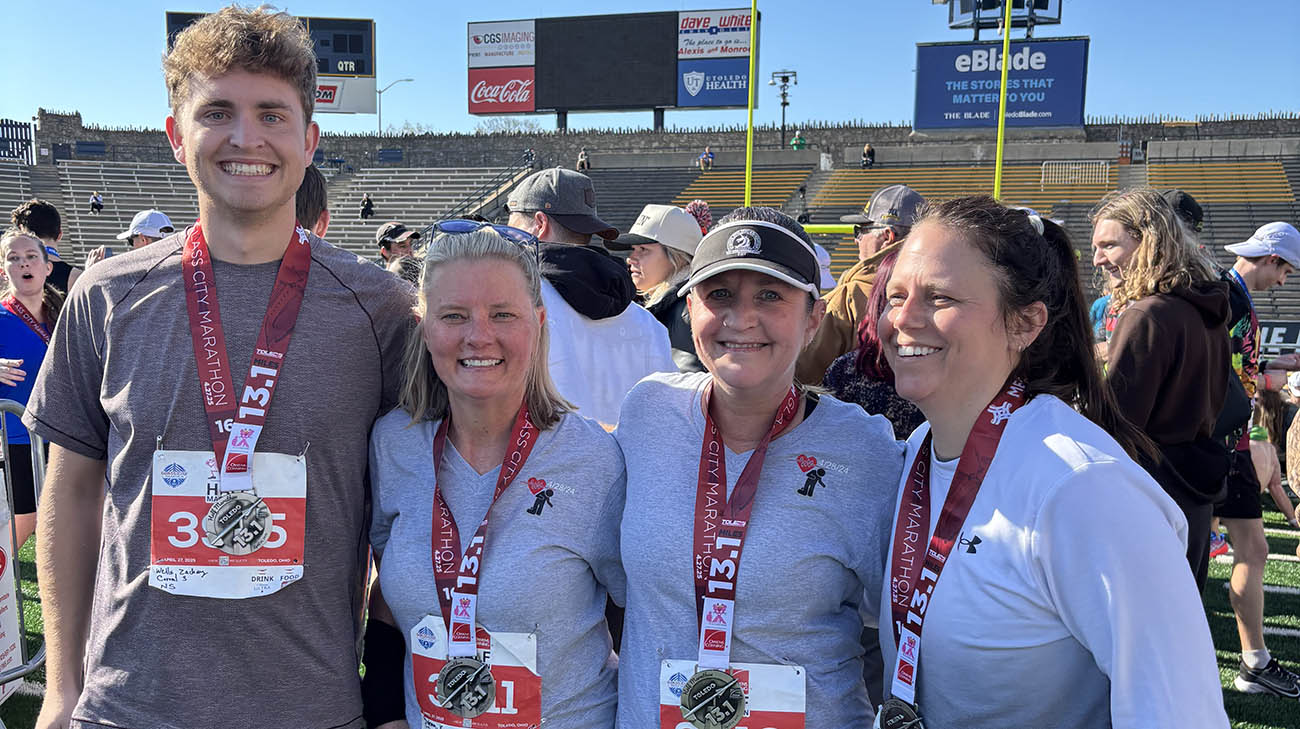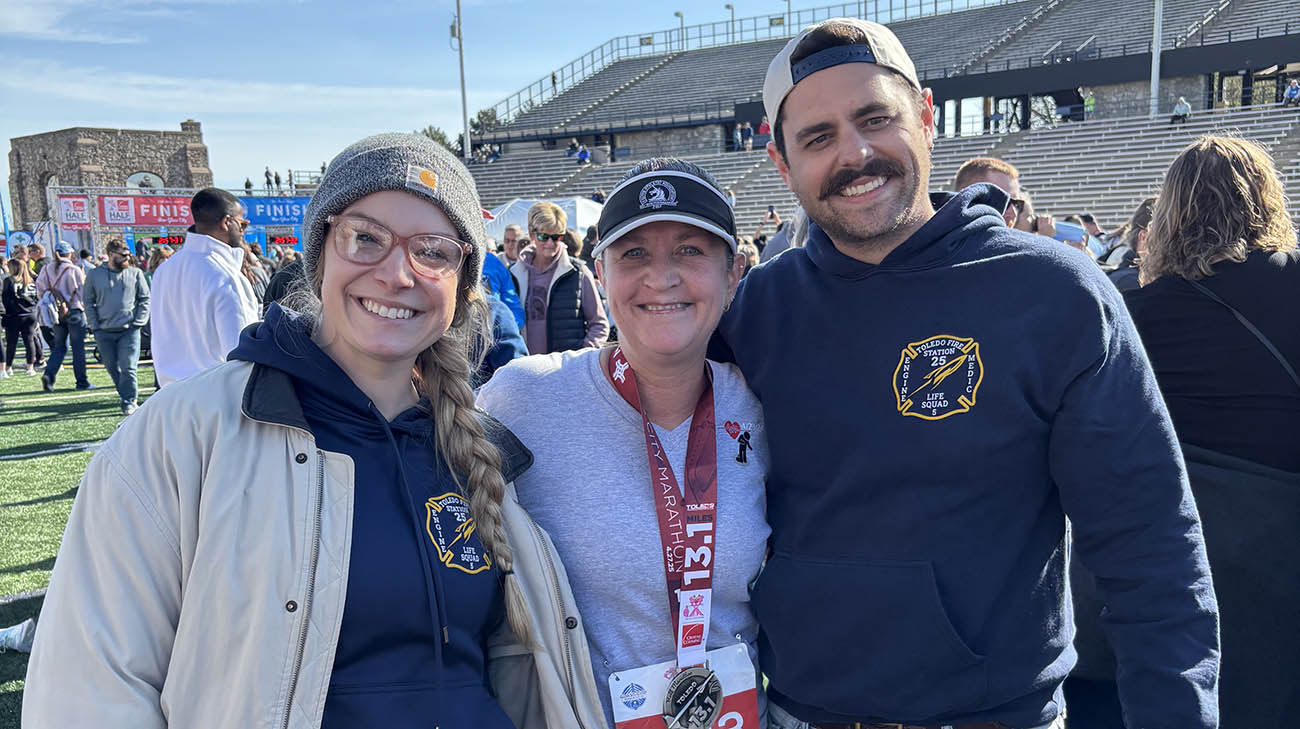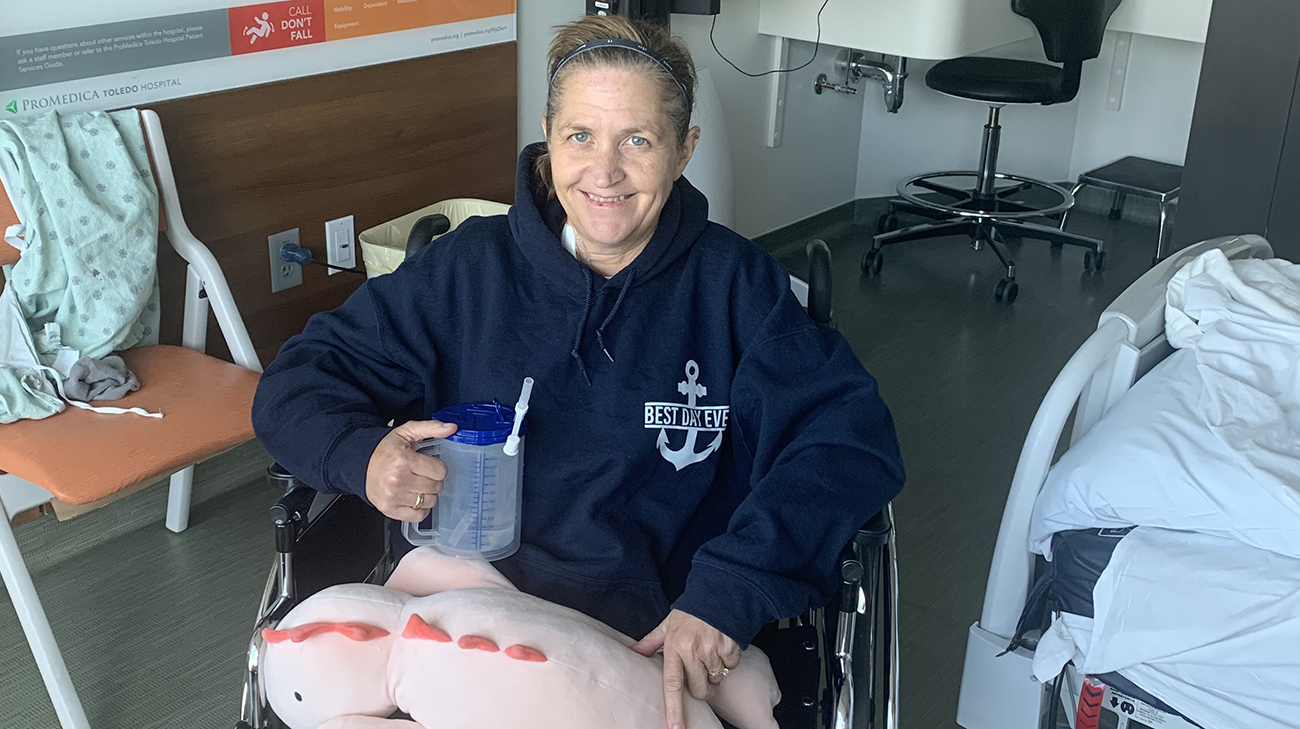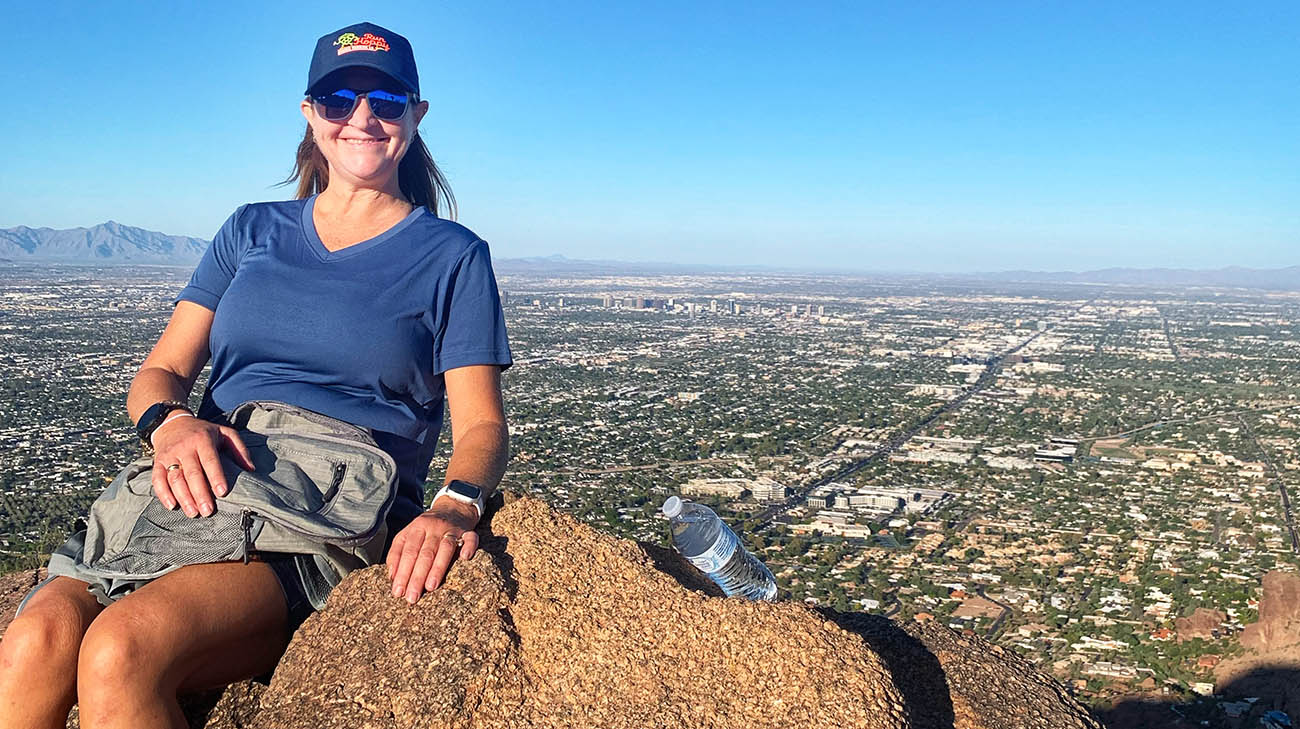
At the 2024 Glass City Half Marathon in Toledo, Ohio, runner Nancy Wells found herself unable to continue between the 4- and 5-mile point. Despite having completed over 60 marathons and half marathons in the past two decades, the heat and humidity, combined with a tightening sensation in her chest, forced the 53-year-old to withdraw. As she was veering off the course, she suddenly collapsed.
It wasn't until she woke up hours later in a Toledo hospital that Nancy discovered she suffered a major heart attack due to a blockage in the left anterior descending (LAD) artery, the biggest artery in the heart. Because that vessel provides 50% of the heart muscle’s blood supply, the acute cardiac event she experienced is eerily known as the widowmaker heart attack. Nancy has a family history of heart problems and was previously diagnosed with high blood pressure. However, she was managing it with medications, and overall, felt healthy.
“I’m so thankful it happened when I was in the right place, at the right time,” says Nancy, whose life was saved by the quick action of a fellow runner – a retired nurse who immediately performed cardiopulmonary resuscitation (CPR) on Nancy, before emergency medical technicians took over. Minutes later she was taken by ambulance to the nearby hospital. “If I had been running alone, I know the outcome would not have been the same.”

Nancy with members of the medic team at the Glass City Marathon. (Courtesy: Nancy Wells)
Nancy has spent a lot of time reflecting on the acute thrombotic event that almost took her life last year, as she intently trains for the 2025 Glass City Half Marathon in April. It will be her first race since the heart attack, and she couldn’t imagine a better way to spend her 29th wedding anniversary.
“For me, this will be closure,” says Nancy, who has met or corresponded with most of the individuals who cared for her that day. “I’m just going to run with a smile on my face. I’m thankful I’m still able to do this.”
After her heart attack, physicians in Toledo performed a balloon angioplasty procedure, or stent, to clear the blockage in Nancy’s artery and restore blood flow to her heart. Back home and walking a few days later, she reached out to clinical cardiologist Tamanna Singh, MD, who is director of the Cleveland Clinic Sports Cardiology Center, to guide her recovery and rehabilitation. Nancy had one goal in mind: to return to running.

Nancy recovering in the hospital after experiencing a heart attack. (Courtesy: Nancy Wells)
According to Dr. Singh, a customized cardiac rehabilitation program is strongly advised for anyone who has had a heart attack, heart failure and/or cardiac surgery. “Rehab will make the heart stronger and more efficient, and in some cases, can stimulate the growth of new heart vessels,” explains Dr. Singh. “We need to ensure the heart can provide more blood flow to areas that weren’t getting adequate supply previously.”
Nancy’s program began and ended with a maximal intensity stress test, to provide a baseline for her heart function that is compared to her heart’s post rehab functionality. Because Nancy was already a fit athlete, she was able to easily complete her cardiac rehabilitation regimen – which consisted of about 36 sessions, at a Cleveland Clinic facility near her home, over three months. Much of the rehab occurred on a treadmill or exercise bike as her heart rate, heart rhythm and blood pressure were closely monitored.

The same day Nancy completed the Glass City Half Marathon in 2025, is the same day she and her husband celebrated their 29th wedding anniversary. (Courtesy: Nancy Wells)
“It’s also important, during rehab, to build the patient’s psychological confidence and reassurance,” adds Dr. Singh. “A heart attack is a traumatic event, and it can take time to build up the confidence to run long distances again.”
Given the nature of her sudden heart attack, Nancy has been somewhat reluctant to run – including during her training regimen for the Toledo half marathon – by herself. But she also revels in the camaraderie of training and running with her “tribe” of friends, some of whom will accompany her, and her 22-year-old son, Zach, for the race.
By the time her rehab sessions ended, Nancy’s ejection fraction, or heart’s ability to pump blood, had improved from an abnormally low rate of 30% to over 60%, which is within the normal range. That’s when she knew she was well down the road to recovery and began thinking about competing again.

Nancy is grateful she's able to continue staying active. (Courtesy: Nancy Wells)
After the Toledo half marathon, she is scheduled to compete in one of her favorite events – the 2025 New York City Marathon, in early November.
“I know I’m not the runner I once was, and that’s all right,” notes Nancy. “I believe exercise and diet are the best way to combat health issues, and I want to keep running for as long as I possibly can.”
Related Institutes: Heart, Vascular & Thoracic Institute (Miller Family)Patient Stories
How Fibroid Surgery Helped Woman Restore Her Hope for Motherhood
Dec 1, 2025
“Cleveland Clinic doctors and staff are so passionate and professional and so caring in the way they treat patients. They are always on top of their game.”


